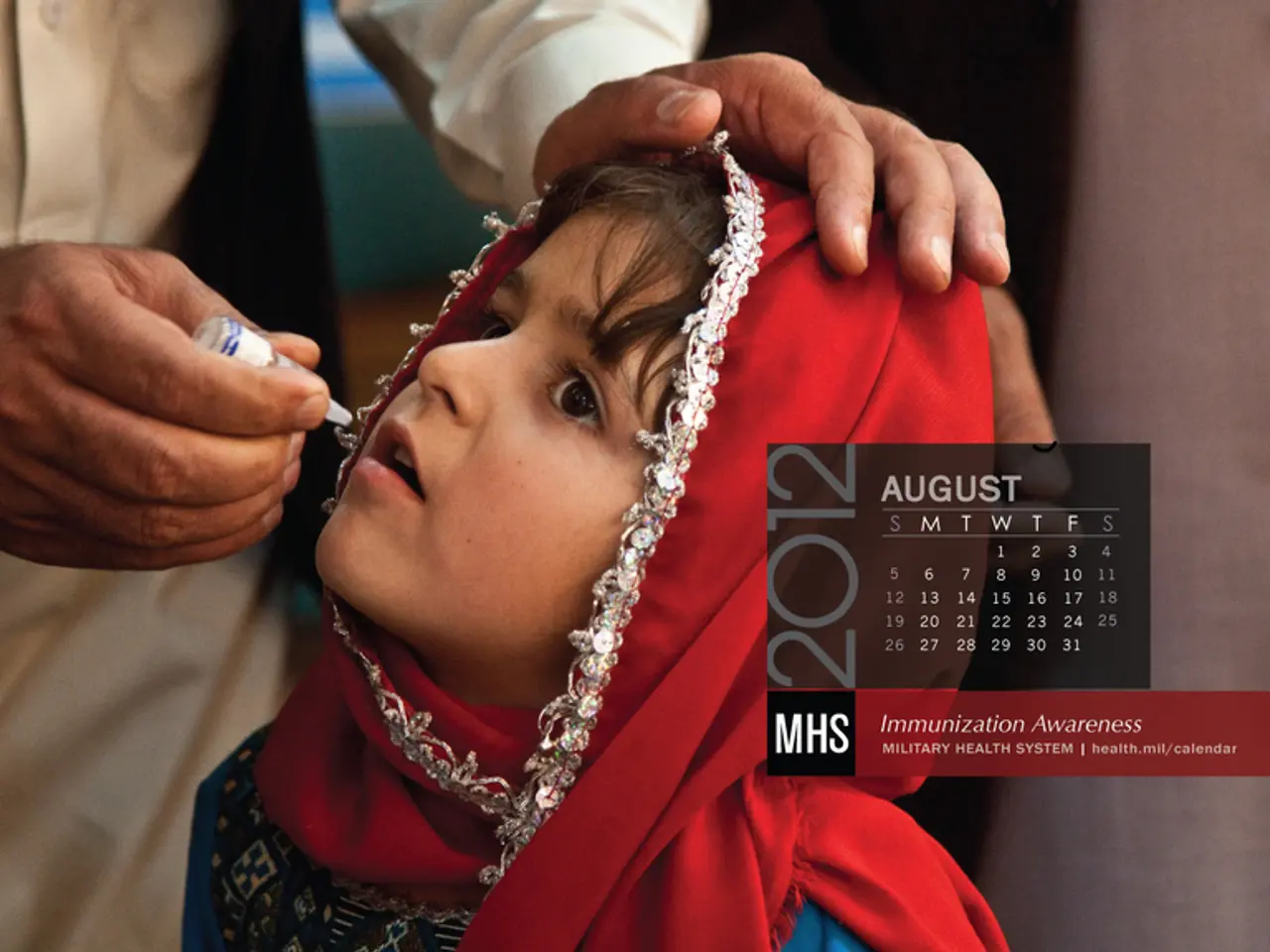German Measles, or Rubella, Symptoms, Treatment, and Pregnancy Implications
Rubella, also known as German measles, is a preventable disease that has been largely eradicated in developed countries through vaccination programs. However, recent global estimates indicate that approximately 236,000 cases of Congenital Rubella Syndrome (CRS) occur annually, predominantly in developing countries.
The MMR vaccine, which protects against measles, mumps, and rubella, is delivered at 12-15 months and a second dose at 4 to 6 years. This vaccination is the only way to prevent the contraction of rubella, offering protection not only against the disease but also against measles and mumps.
Rubella spreads through the virus replicating in the lymph nodes and the nasopharynx. A person who has rubella is contagious for 7 days before the rash appears and up to a week after. Symptoms of rubella normally appear 14 days after exposure and can include a red rash that starts on the face and neck and moves to the trunk and limbs, as well as headache, stuffy or runny nose, mild fever, red, inflamed eyes, enlarged and tender lymph nodes, and aching joints.
However, it is important to be aware that rubella can enter the U.S. from other countries. Reported cases have declined globally, with an 81% reduction from 93,816 cases in 2012 to 17,407 cases in 2022. However, rubella and CRS remain significant issues, especially in regions where rubella vaccination is not fully implemented.
CRS results from maternal rubella infection during pregnancy, particularly within the first trimester when the risk of severe fetal damage is highest. The rubella virus crosses the placenta and disrupts fetal development, causing a spectrum of birth defects. The most common and serious outcomes include congenital heart defects, cataracts and other ocular abnormalities, intrauterine growth retardation, and sensorineural hearing loss, often bilateral, which can severely impair speech and language development if untreated and may not be detected until developmental delays become apparent.
Early diagnosis and intervention, such as newborn hearing screening, are crucial to managing CRS outcomes effectively. Modeling predictions suggest that without widespread rubella-containing vaccine (RCV) introduction, this number could average 30,000 to 34,000 cases per year worldwide from 2025 to 2055.
In summary, despite significant progress in rubella control, congenital rubella syndrome remains a major global health concern, particularly in areas with low vaccine coverage. The syndrome has severe consequences for fetal development, mainly affecting the heart, eyes, growth, and hearing, underscoring the importance of maternal immunization and robust surveillance programs.
- To avoid contracting rubella, it's vital to receive the MMR vaccine, which includes protection against measles, mumps, and rubella, delivered at 12-15 months and a second dose at 4 to 6 years.
- Regardless of being a preventable disease in developed countries through vaccination programs, Rubella, or German measles, remains a significant medical-condition, causing Congenital Rubella Syndrome (CRS), with approximately 236,000 cases annually, predominantly in developing countries.
- The science behind immunizations and vaccines plays a crucial role in health-and-wellness, not only protecting individuals from diseases like rubella but also preventing severe complications such as Congenital Rubella Syndrome, which can have lifelong impacts on a child's mental-health and development.




